| Do we need another visit
to a railroad museum? Well we thought not as we departed but the collection
looked interesting so I went back to take a look. (Jan read her book!) It
is better than most. Inevitably there are the huge 4-6-6-4 'Challenger'
articulated ore haulers. There is so much pipe work and junk on the outside
of these engines, I have no idea what it is all for. English engines are
much tidier. | 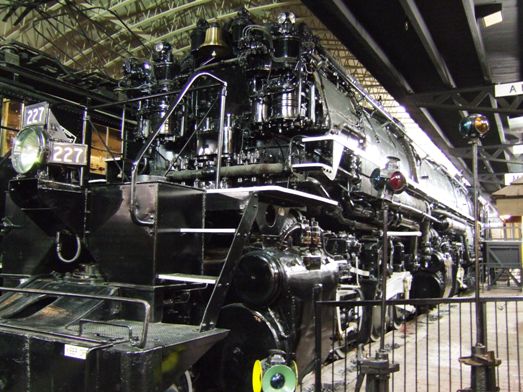 |
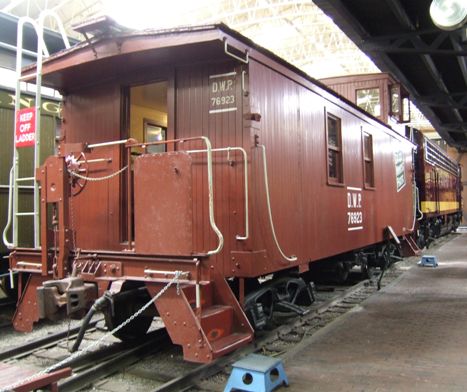 |
Then the inevitable caboose. These are often used for displays of other
items or photographs as in this case. |
|
A reminder of the early days with a train of logs on its way to the lumber mill. | 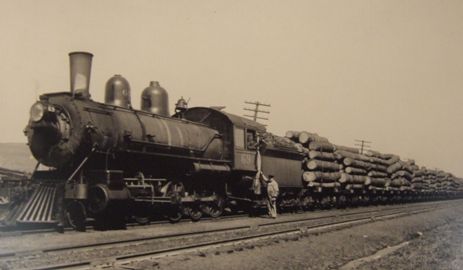 |
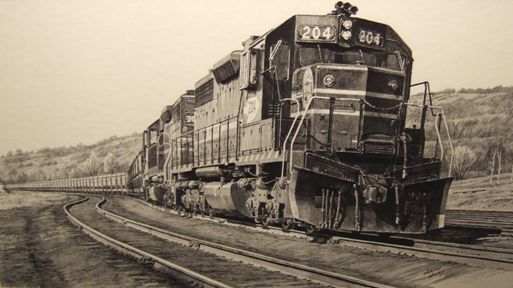 |
A more modern shot with three locos probably generating 7500hp and a long line
of ore wagons behind. |
| The Soo Line features
prominently with this early F series diesel dating from the 1950s. | 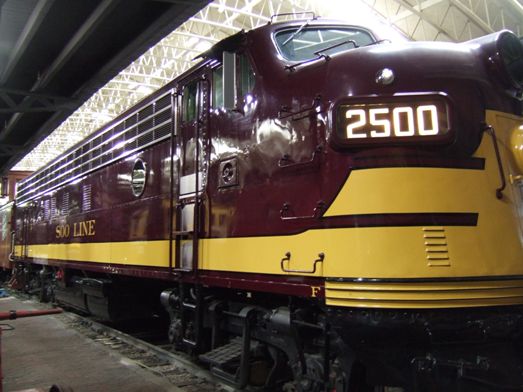 |
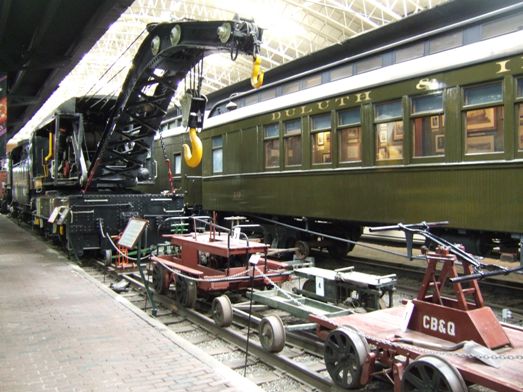 |
We call them breakdown cranes, in the US they are known as wreckers because
they attend wrecks. Perhaps it dates from the days of wooden cars when crash
survivability was not the holy grail it is today. |
| They also used cars to
inspect the railroad much more than we do. This Hy-Rail car is a converted
1957 Pontiac and was used until 1974 to inspect track on the 74 miles of the
Erie mining company, the longest private railroad in the US. Seven 96-car
trains a day move 10.6 million tons a year of taconite pellets along this
line. | 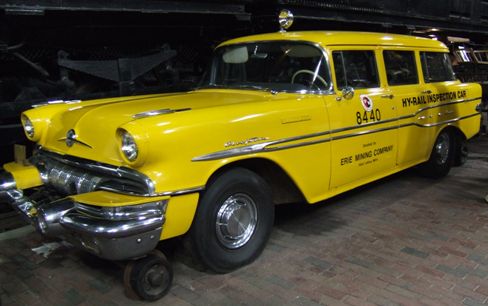 |
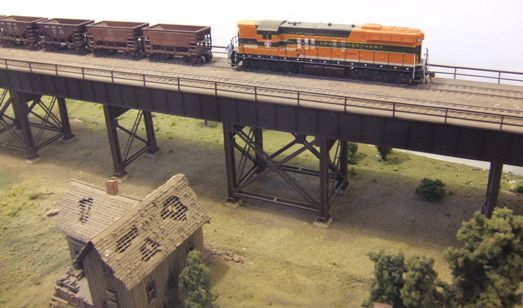 |
There are quite a number of model dioramas and models on show. This is HO
gauge showing an ore loading facility. |
| Another area shows the
importance of the timber industry. There were several school trips going
round while I was there. These museums are very much aimed at the education
market.. | 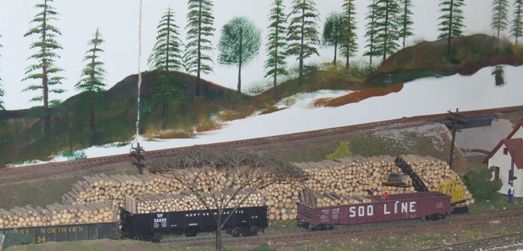 |
 |
A couple of HO scale models. In some respects one can appreciate the models
more than the real thing which is often just too big to grasp. |
| Minnetonka is a
wood-burning loco built in 1870 at a cost of $6000 and was used for logging
operations 20 miles west of Duluth. She had a varied career and appeared
(following restoration) at the world's fairs in Chicago and New York in the
1930s and again (in steam) at Chicago in 1948. | 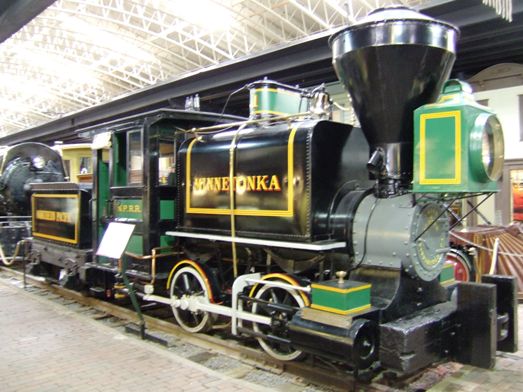 |
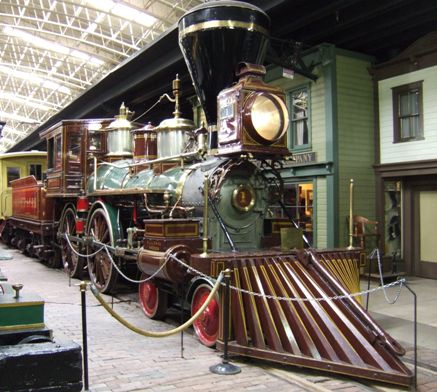 |
The William Crooks is a Pioneer class locomotive built in 1862 and ran the
first trains between Minneapolis and St Paul. |
| Much less frequently
preserved are the trams which were a feature of many city transport systems
in the early 1900s. | 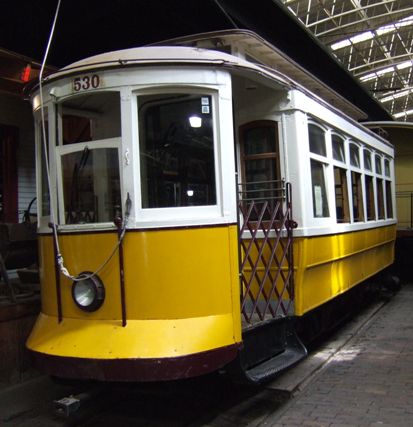 |
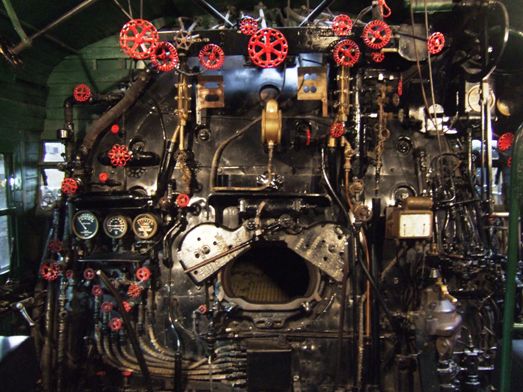 |
The view of the controls of a large steam locomotive is quite an impressive
sight. Being a steam engine driver was a skilled task and knowing the
function of all these bits would be quite a fund of knowledge. |
| When you see the size of
the fire bed of the largest locos you can understand why coal was not
shovelled onto the fire but was automatically distributed by a screw thread
from the tender. The plates in the floor can be automatically lifted (hinged
at the far ends). This moves the fire towards the far end. Firing one of
these was as skilled a job as driving it. | 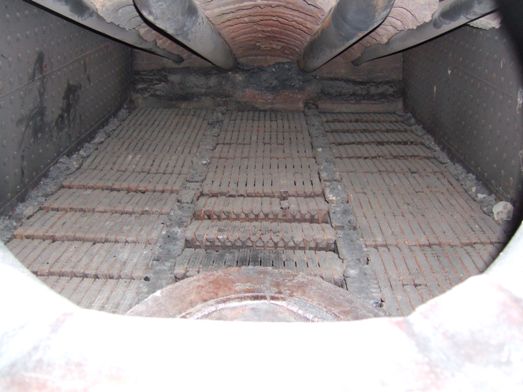 |
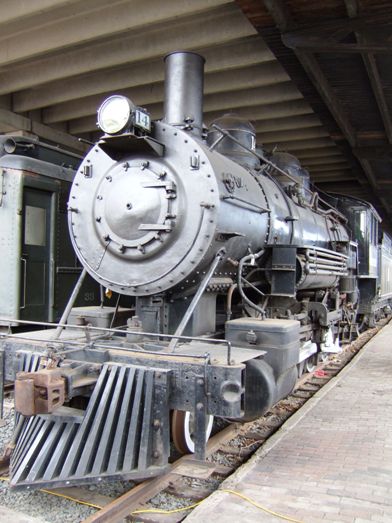 |
Outside are more locomotives and stock. This is much smaller than the
locomotives stored inside. A lot of the cover here comes from the highway
which runs above. |
| There were a lot of small
private railroads in the mines and in the forests. Thus there are a number
of smaller diesels which have only recently been retired. | 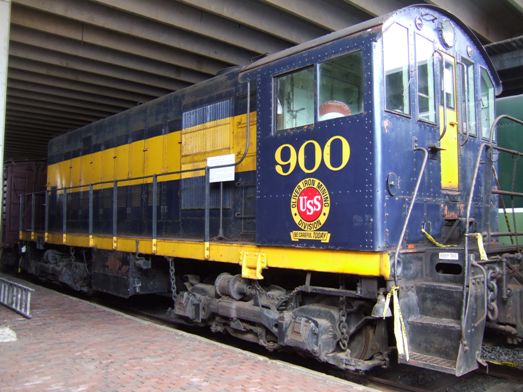 |
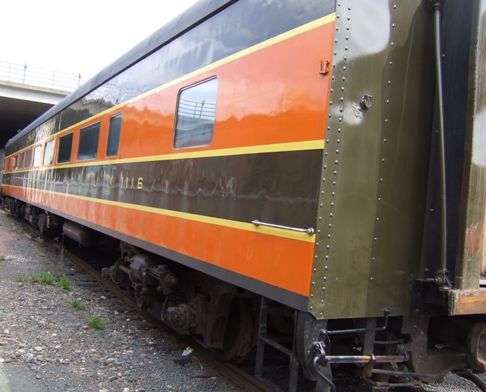 |
There is some coaching stock. The museum runs trains along the front of
Duluth in the tourist season. |
| I'm interested in the
double decker stock which is more common here. These are not used in England
partly because of the smaller loading gauge (we have too many tunnels and
bridges most of which will only just accommodate the train sizes we have
now) and partly because you can't get the passengers on and off quickly
enough during the short station stops in our much more intensively worked
commuter railways. | 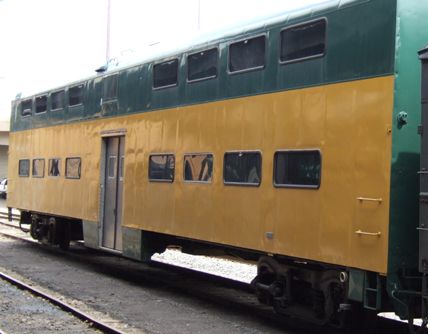 |
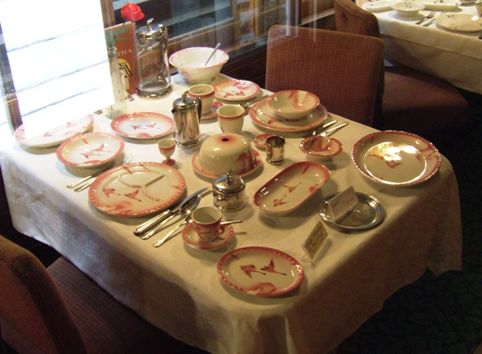 |
From an earlier period, one of more opulence, is this place setting for dinner
for two. Five star, of course, and only for those who could afford it. Now I
wonder what was on the menu. |
|
American trains have always had such huge searchlights on the front to scare
off the animals. This is also something not found on British railways which
are totally fenced in. | 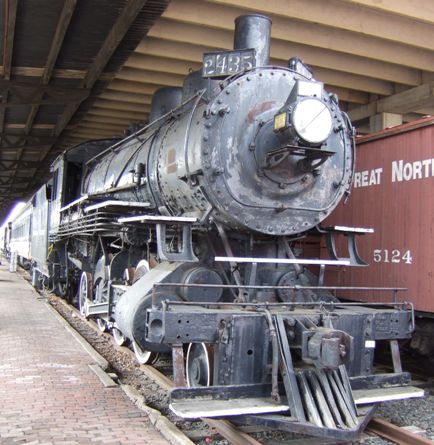 |
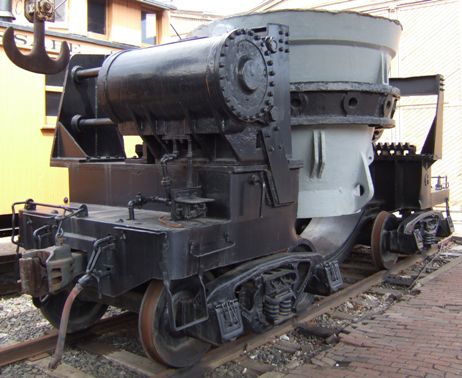 | This is a most unusual
find. It is a cauldron wagon used for moving loads of molten metal about an
ironworks. The cauldron can be rotated to unload the metal. Definitely a
'works' wagon. |
|
And another very unusual find. This is a self-propelled McGiffert log loader
built around 1900. The steam engine inside provides power for the log
winches, to move the crane along the tracks and also to actuate the side
supports which stop it toppling over. The log carriers could pass underneath
to be loaded. Over 1000 of these machines were built in Duluth and used all
over the US. | 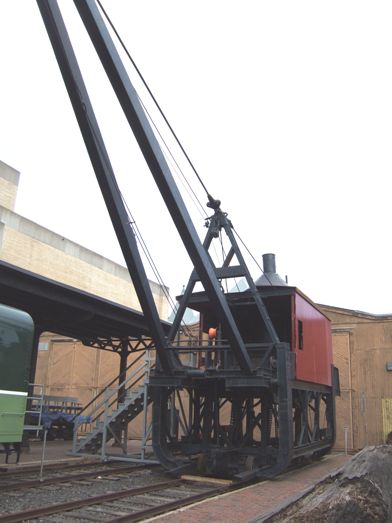 |
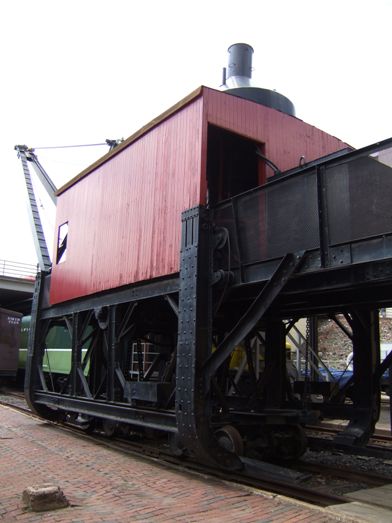 | A view from the rear of
this most unusual unit. There is a legend that one of these units loaded
over 1070 logs (over a million board feet) in a single day up near Crater
Lake in Oregon. Only three machines remain in existence today. |
|
This is a 1:8 scale working model of the Baldwin 'Yellowstone' class 2-8-8-4
Missabe and Iron Range locomotive 225. It was built by Ralph Andres and took
31 years to complete at over 1,000 hours per year. It is 17ft long, develops
19hp and weighs in at 2,800lbs. The caboose houses its bell and whistle
(150W per channel!). There is the equivalent of a very expensive house tied
up in this 'model'. | 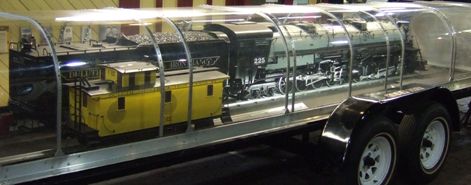 |
|